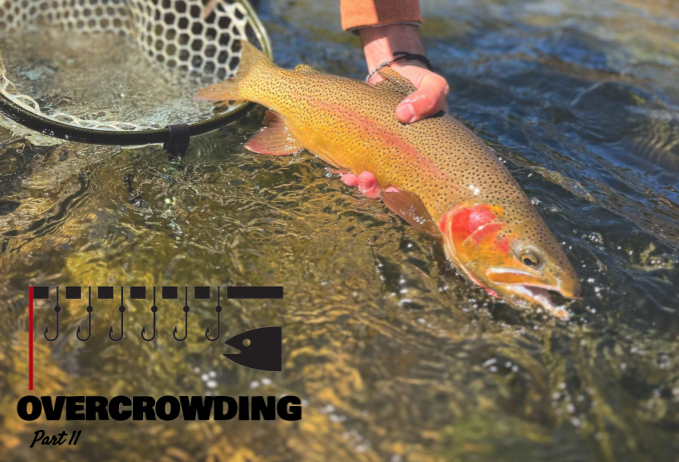Overcrowding 11) Measuring Success
I think it's fair to assume every angler hopes to catch lots of fish, and even better, big fish.... but...

Welcome to last installment in our series on overcrowding, examining how we got here and where we go next to find new solitude. If you've made it this far, thanks for reading along!
I think it's fair to assume every angler hopes to catch lots of fish, and even better, big fish. As if fishing isn't addicting enough, the pursuit of top tier fish can really drive people to madness. Speaking from experience, the madness spills out each fall, as spawning trout and salmon migrate up streams poised to save anglers from the late summer doldrums. The quest for the largest fish has hijacked and molded the modern zeitgeist of fly-fishing. Though slightly shifting now, innovation over the past ten (+) years has centered around faster action rods, lines for slinging bigger and bigger flies, articulated swimmers, and foamy rubber legged monstrosities. The paradigm: big rods and big flies promising big fish. Next, certain acclaimed stretches of river have become romanticized, overrunning anglers' minds with pictures and rumors of coveted lunkers. Expectations are higher than ever, but it comes at a cost. The bloodlust has poisoned on-stream etiquette, overrun fishing destinations, and has even infiltrated our social media outlets.
I fully understand that every individual has a distinct goal for each fishing trip, but the voracious hunt for large trout shouldn't be the fly anglers alpha-and-omega. In the endless search for larger and larger trout, expectations are, at times, unachievable.
I'm not suggesting that we stop reaching for ways to fool the largest fish that swim, but to remind the angling community that there are other fascinating and rewarding ways to fish. The 12-inch trout has become bycatch, something tossed aside as we look upstream for the next likely deep run holding a monster. Funny how a sport revolved around close attention to detail, observing conditions, and keying in on the dynamics of the natural world can so easily cast aside any reward.
So, how do we measure success for a day on the water? Is one big fish a successful outing? Would that mean a day with two big fish is twice as successful? How many small trout caught would it take to equal the success of catching that one big fish? How does a day of catching 50 12” trout compare to a day of catching a new personal best?...Are they even comparable? Moreover, should they even be comparable? My point is simple; trying to measure different outcomes falls apart when you try to stack things in a uniform way. It's apples vs oranges.
Who's keeping score anyway? Unless you're in a competitive angling situation, you're in control of the scoreboard and how you feel at the end of the day.
To close out this entire series, there is a lot of fishy water out there, and a lot of fish to catch. Not all of them will be the fish of your lifetime, especially if you let everyone else decide what a lifetime fish should look like. Trust that big fish will eventually come, enjoy the ride. Take solace in every fishing opportunity and embrace the process.
One final anecdote. If I’m going fishing on a local tailwater and walk by another angler, usually our conversation is terse. We both acknowledge that we’re competitors, and information shared is usually minimal. Plus these interactions are more common on busy stretches. But if I run into another angler at a bass pond, or carping, even fishing on a trout lake, I’m more likely to have a conversation rooting in both parties mutual success, sharing of ideas, and general comradery. We can't be afraid to spread out.


